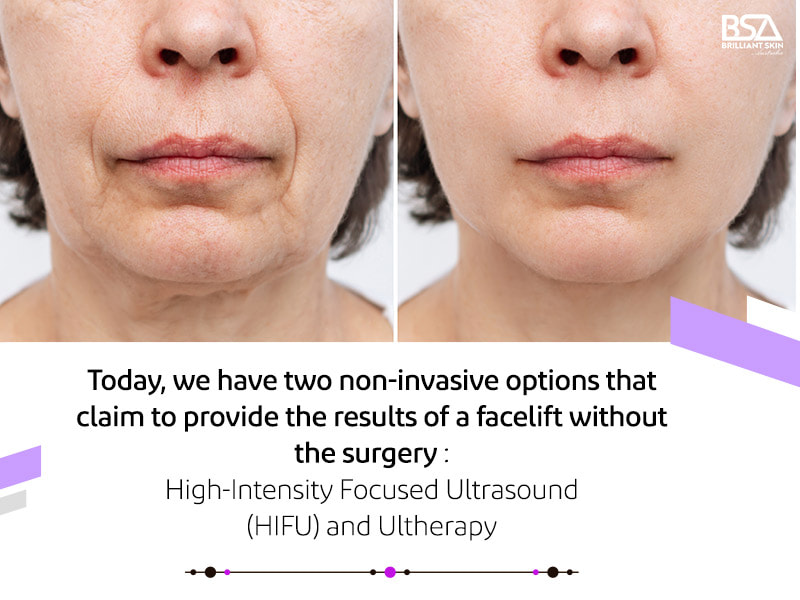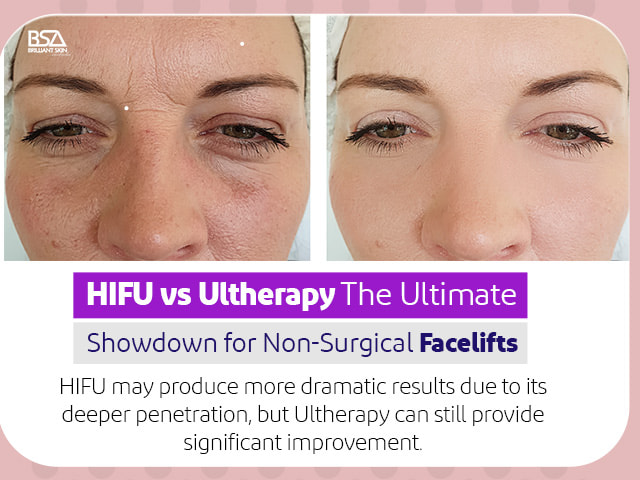HIFU facial rejuvenation trick without surgery
- Updated May 22, 2023
- by Honey Seida

As we age, our skin starts to lose elasticity, resulting in sagging and wrinkles. For years, the only solutions for this were either surgical facelifts or non-surgical treatments that offered minimal improvement.
HIFU vs Ultherapy The Ultimate Showdown for Non-Surgical Facelifts
today, we have two non-invasive options that claim to provide the results of a facelift without the surgery: High-Intensity Focused Ultrasound (hifu) and Ultherapy. In this article, I will compare and contrast these two popular treatments to help you determine which may be right for you.
Introduction to Non-Surgical Facelifts
Non-surgical facelifts are becoming increasingly popular because they provide a way to reduce the signs of aging without the risks and recovery time of surgery.
These treatments are typically performed in an outpatient setting and require little to no downtime. They use various technologies to stimulate collagen production and tighten the skin, resulting in a more youthful appearance.
What is HIFU and How Does It Work?
High-Intensity Focused Ultrasound (HIFU) is a non-invasive treatment that uses ultrasound waves to target the deep layers of the skin.
The ultrasound waves create heat, which stimulates collagen production and tightens the skin. HIFU can be used to treat the face, neck, and décolletage. The procedure typically takes between 30 and 90 minutes, depending on the area being treated.
The HIFU device delivers the ultrasound waves to the target area in short bursts. Patients may experience some discomfort or a slight burning sensation during the treatment, but this is typically well-tolerated. HIFU results are not immediate, as it takes time for the skin to produce new collagen. Most patients see noticeable results within 2-3 months, with continued improvement for up to 6 months.
In this video, you can see the before and after results of hyphotherapy and its effects on the customer's face.
What is Ultherapy and How Does It Work?
Ultherapy is another non-invasive treatment that uses ultrasound technology to stimulate collagen production and tighten the skin. Like HIFU, it targets the deep layers of the skin to provide a lifting effect. Ultherapy can be used to treat the face, neck, and chest.
The procedure takes between 30 and 90 minutes, depending on the area being treated. The Ultherapy device delivers micro-focused ultrasound energy to the target area, causing the skin to contract and tighten. Patients may experience some discomfort during the treatment, but this is typically well-tolerated. Results are not immediate, as it takes time for the skin to produce new collagen. Most patients see noticeable results within 2-3 months, with continued improvement for up to 6 months.
HIFU and Ultherapy are similar in that they both use ultrasound technology to stimulate collagen production and tighten the skin. However, there are some differences between the two treatments.
One major difference is the depth at which they target the skin. HIFU targets the deeper layers of the skin, while Ultherapy targets the superficial layers. This means that HIFU may produce more dramatic results, but also carries a slightly higher risk of side effects.
Another difference is the number of treatments required. HIFU typically requires only one treatment, while Ultherapy may require multiple treatments spaced several months apart.
Side Effects and Risks of HIFU and Ultherapy
Like any medical procedure, HIFU and Ultherapy carry a risk of side effects and complications. The most common side effects include redness, swelling, and mild discomfort during the treatment. These typically resolve within a few days.
More serious side effects are rare but can occur. These include burns, nerve damage, and scarring. It is important to choose a qualified and experienced provider to minimize the risk of these complications.
Results and Effectiveness of HIFU and Ultherapy
Both HIFU and Ultherapy are effective non-surgical treatments for lifting and tightening the skin. Patients can expect to see a noticeable improvement in skin laxity and wrinkles within 2-3 months of treatment, with continued improvement for up to 6 months.
HIFU may produce more dramatic results due to its deeper penetration, but Ultherapy can still provide significant improvement. The results of both treatments are long-lasting, but maintenance treatments may be necessary to maintain the results.

Cost Comparison: HIFU vs Ultherapy
The cost of HIFU and Ultherapy varies depending on the area being treated and the provider. HIFU typically costs between $1,500 and $4,500 per treatment, while Ultherapy ranges from $2,000 to $5,000 per treatment.
It is important to note that insurance does not typically cover the cost of these treatments, as they are considered cosmetic procedures.
Which Treatment is Right for You? Factors to Consider
Choosing between HIFU and Ultherapy depends on several factors, including the area being treated, the desired results, and personal preference. HIFU may be a better option for those looking for more dramatic results, while Ultherapy may be better for those looking for a less invasive treatment.
It is important to consult with a qualified provider to determine which treatment may be right for you. They can assess your skin and recommend the best course of treatment based on your individual needs.
Expert Opinions and Reviews on HIFU and Ultherapy
Both HIFU and Ultherapy have received positive reviews from patients and medical professionals. In a study published in the Journal of Cosmetic and Laser Therapy, HIFU was found to be a safe and effective treatment for facial rejuvenation. Similarly, a study published in the Aesthetic Surgery Journal concluded that Ultherapy was a safe and effective treatment for skin tightening.
Conclusion: HIFU vs Ultherapy - Which One Wins the Showdown?
In the end, the choice between HIFU and Ultherapy comes down to personal preference and individual needs. Both treatments offer a non-invasive way to lift and tighten the skin, with long-lasting results.
If you are considering one of these treatments, it is important to choose a qualified provider and discuss your goals and concerns. They can help you determine which treatment may be right for you and ensure that you achieve the best possible results.
So, which one wins the showdown? The answer is that both HIFU and Ultherapy are winners in their own right, providing safe and effective options for non-surgical facelifts. If you're interested in exploring HIFU or Ultherapy further, reach out to a qualified provider to schedule a consultation.






